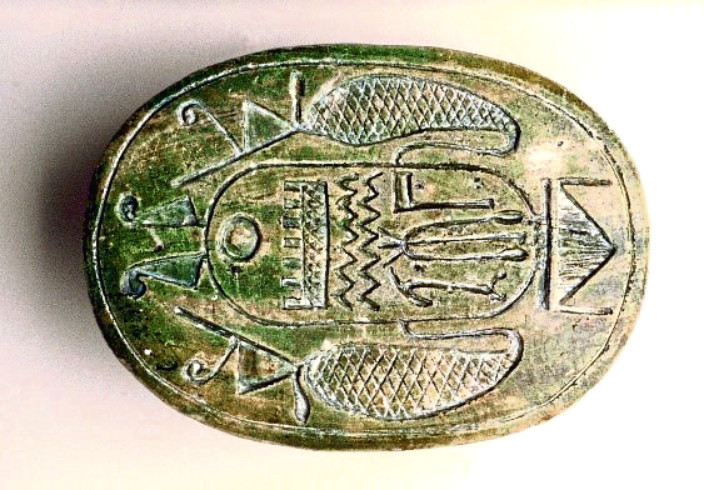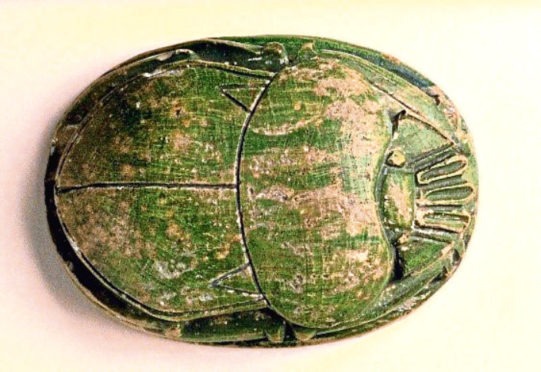The object that I am excited to present in this article is a scarab amulet which holds a special significance.
Amulets like this, representing the scarab or dung beetle, were popular through much of Ancient Egyptian history, as far back as 2000 BC. The scarab motif appeared in different forms over time. They were used to commemorate events, protect mummies, or even as finger-ring decorations, changing with both time and location. They are therefore a relatively common Egyptian object. Our example, however, tells a slightly different story as it is a fake. Closer inspection shows that this example in the AAGM archaeology collection is a counterfeit scarab, made from plaster to mimic ancient artefacts and probably sold to a European collector some time in the late 1800s.

Many objects like this came into museums through donations from private collectors that were connected to colonial trade and governance around the world, in this case Egypt and North Africa. Academic expeditions with the government of the country’s consent and involvement are a relatively recent development. Colonial governors, officers, doctors, or tourists would gather objects from their travels, often for display in their homes. These collections, containing both authentic and fake objects, were often donated to local museums by later generations. Fake objects like this one are nevertheless valuable to museums as they tell a unique story about recent history to complement the typical narrative. Not one of colonial progress, oppression, or rebellion, but one of native agency and resistance.
Enterprising local Egyptian businessmen detected that European visitors wanted antiques and started producing convincing fakes to sell, simultaneously preserving their own ancient heritage and earning money to provide for their families. They took control of the situation and selectively adapted or rejected outside influence.
Stories like this played out around the world, and appreciating the stories of the cultures affected by colonial collectors enables us to build better, more inclusive displays and interpretations of history.
